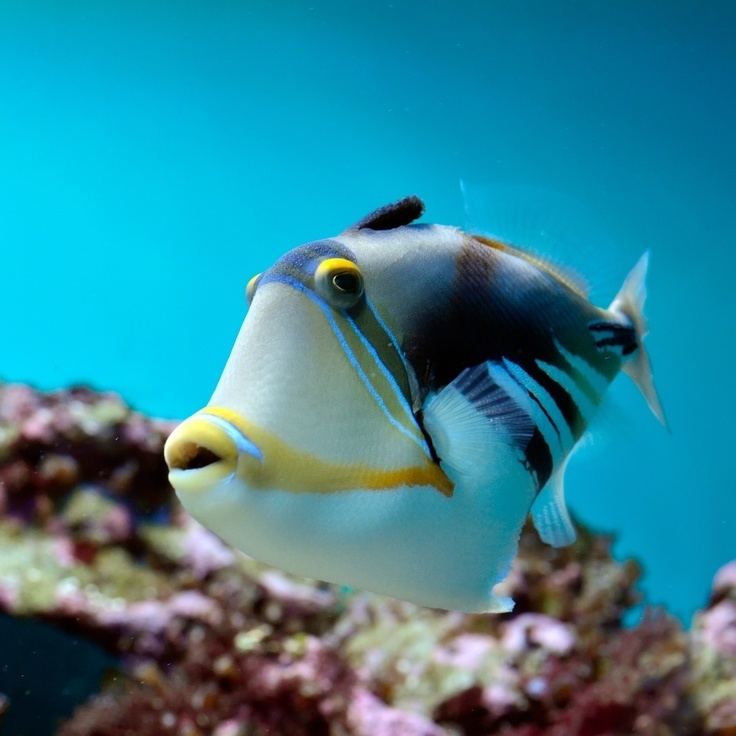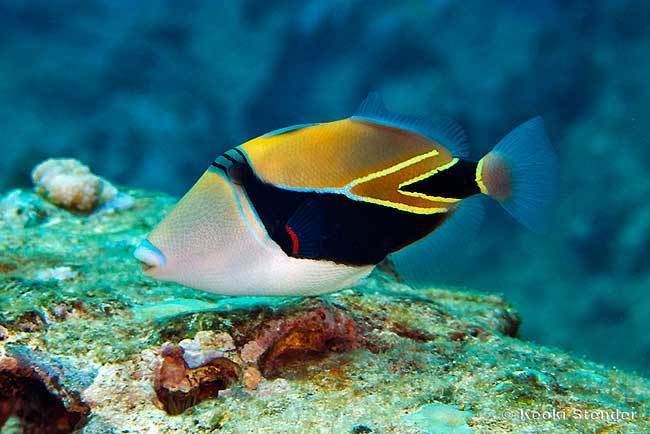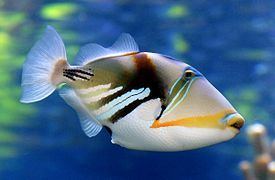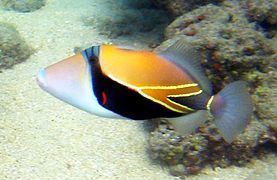Rank Species | Phylum Chordata Family Balistidae Scientific name Rhinecanthus rectangulus Higher classification Rhinecanthus | |
 | ||
Similar Triggerfish, Lagoon triggerfish, Rhinecanthus, Clown triggerfish, Balistes | ||
When humuhumunukunukuapua a attack don t annoy the hawaiian reef triggerfish
The reef, rectangular, or wedge-tail triggerfish, also known by its Hawaiian name, humuhumunukunukuāpuaʻa ([ˈhumuˈhumuˈnukuˈnukuˈwaːpuˈwɐʔə]), also spelled Humuhumunukunukuapua'a or just humuhumu for short; meaning "triggerfish with a snout like a pig." is one of several species of triggerfish. Classified as Rhinecanthus rectangulus, it is found at reefs in the Indo-Pacific. It is often asserted that the Hawaiian name is one of the longest words in the Hawaiian language and that "the name is longer than the fish," though Lauwiliwilinukunukuʻoiʻoi is actually a longer fish name.
Contents
- When humuhumunukunukuapua a attack don t annoy the hawaiian reef triggerfish
- Reef triggerfish humuhumunukunukuapua a charging
- Description
- Hawaii state fish
- References

Reef triggerfish humuhumunukunukuapua a charging
Description

The triggerfish's teeth and top lip are blue and the teeth are set close together inside its relatively chubby mouth.

The fish has a small second spine, which it can use to lock its main spine into an upright position. Locking its spine while sheltering inside a small crevice makes it difficult for a predator to pull the fish out. When fleeing from predators, the triggerfish will sometimes make grunting noises, possibly a call to warn other nearby triggerfish of danger.

The triggerfish can blow jets of water from its mouth, which help the fish find benthic invertebrates that may be buried under the substrate. Triggerfish can often be seen spitting sand from their mouths in order to sift through the material in search of edible detritus or organisms.
Reef triggers are fairly aggressive and will generally not tolerate conspecific individuals in their general vicinity; thus the fish is often found solitary. This is particularly true in captivity. Triggers have the ability to rapidly alter their coloration. They can fade into a relatively drab appearance when sleeping or demonstrating submission, while their coloration is often the most vivid when the fish are healthy and unthreatened by their surroundings. They have also been known to bite and attack swimmers in their area, sometimes leaving marks often on the ankle area.
Hawaii state fish
The reef triggerfish was originally designated the official fish of Hawaii in 1985, but due to an expiration of a Hawaiian state law after five years, it ceased to be the state fish in 1990. On April 17, 2006, bill HB1982 was presented to the Governor of Hawaiʻi, which permanently reinstated the reef triggerfish (humuhumunukunukuapuaʻa) as the state fish of Hawaiʻi. The bill passed into law on May 2, 2006, and was effective upon its approval.
